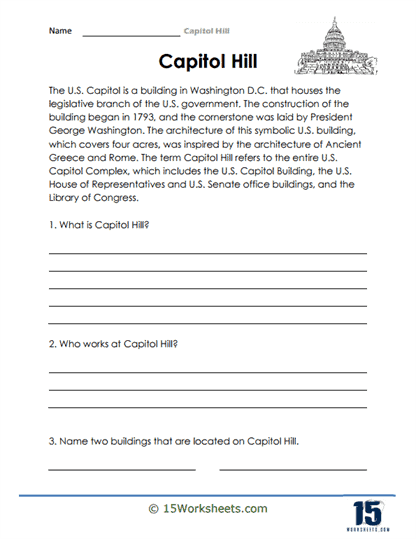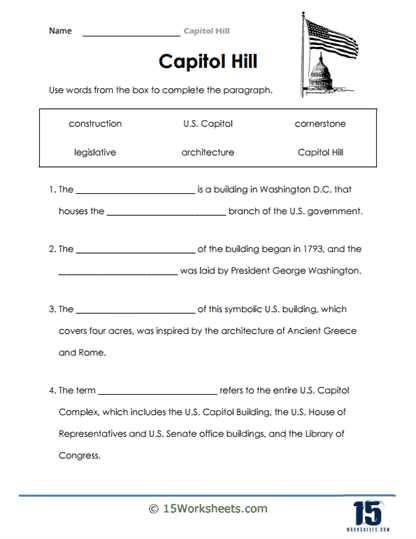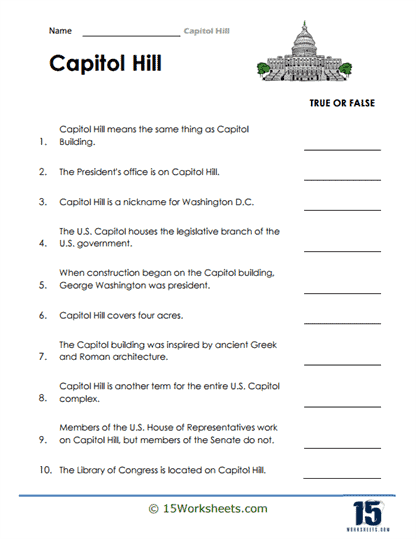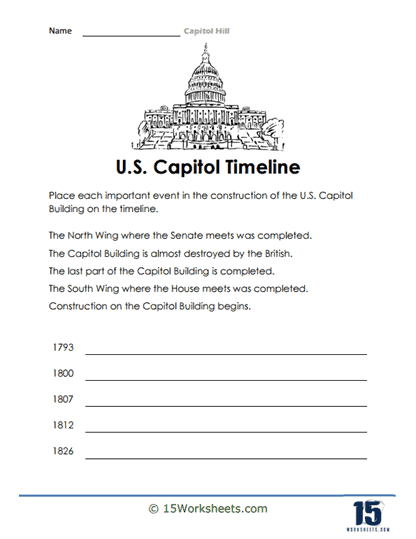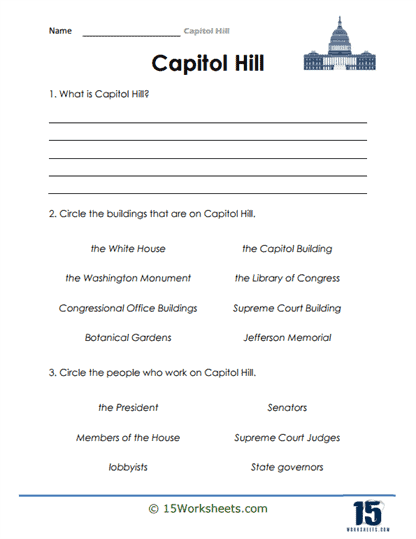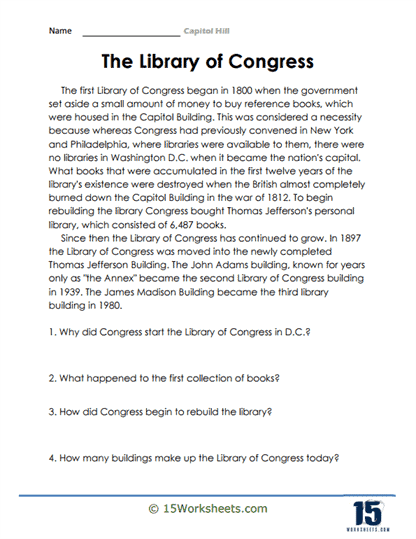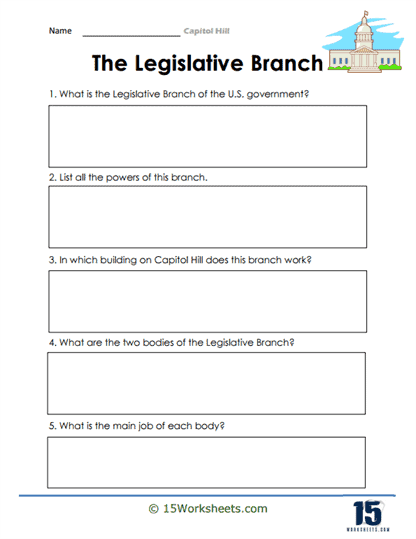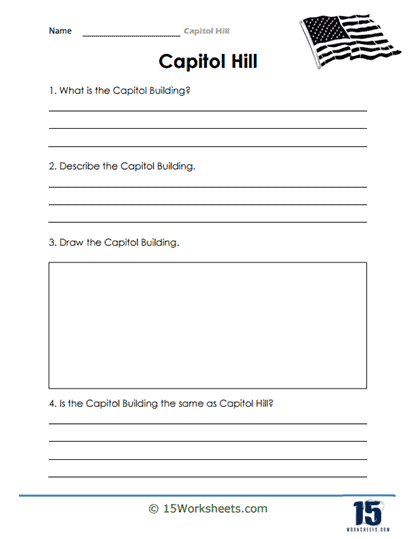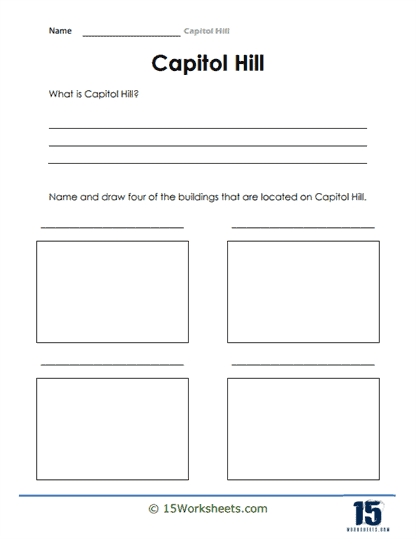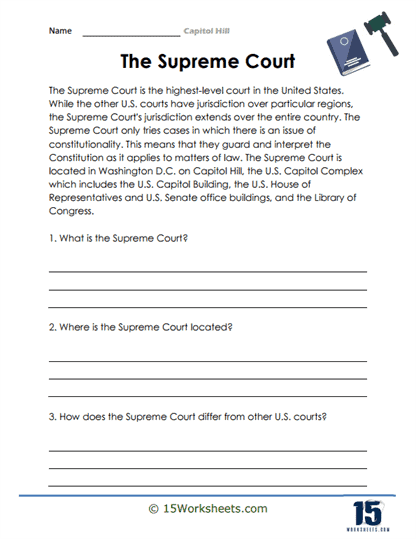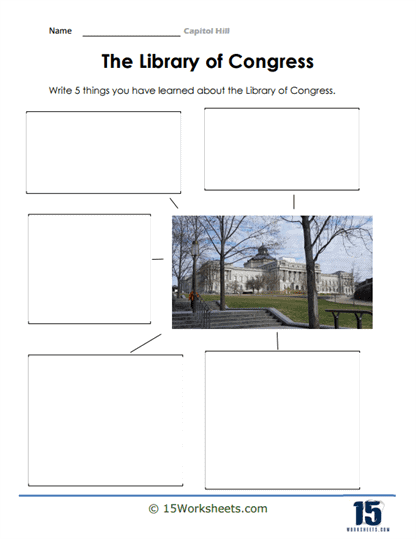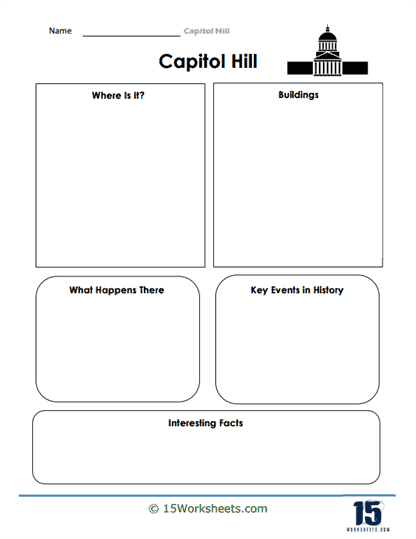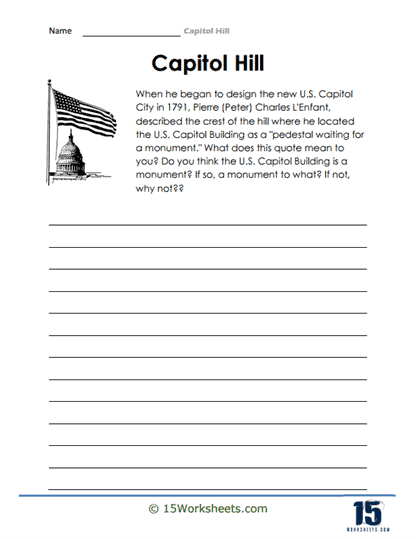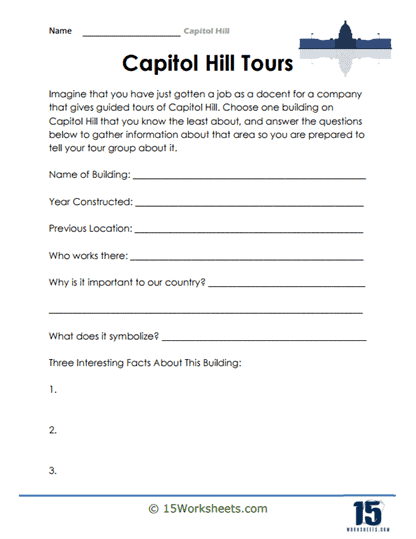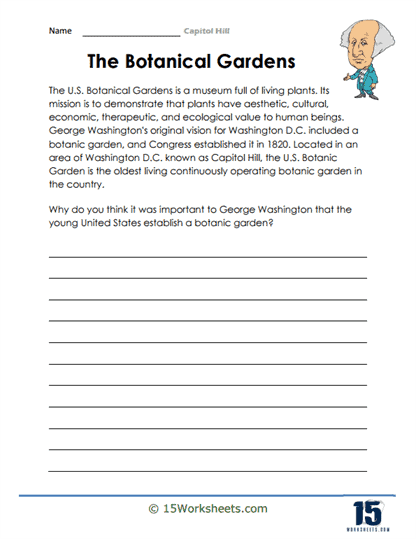Capitol Hill Worksheets
All About These 15 Worksheets
This series of 15 worksheets is designed to immerse students in the rich history, significance, and functions of Capitol Hill, the iconic complex that houses the United States Congress. Through engaging activities and thought-provoking exercises, students will gain a deeper understanding of the legislative process, the role of Congress, and the impact of Capitol Hill on American governance. Through these worksheets, students will:
- Explore the historical context, the significance of the Capitol building and its surrounding complex, and the role it plays in the American political system;
- Investigate the legislative process and how laws are made on Capitol Hill;
- Reflect on the significance of Capitol Hill in American democracy;
- Put the key events in the construction of Capitol Hill in the correct order;
- And answer comprehension questions after thoroughly reading passages on the Library of Congress, The Supreme Court, and The U.S. Botanical Gardens.
Engaging with this series of worksheets will transport students to the epicenter of American democracy, fostering a deep understanding of Capitol Hill, Congress, and the legislative process. Through the various activities and exercises, students will develop critical thinking skills, civic awareness, and a greater appreciation for the institutions that underpin American governance. Overall, this series aims to inspire active citizenship and empower students to understand, engage with, and contribute to the democratic process.
What is Capitol Hill?
Capitol Hill is a historic neighborhood and the political epicenter of Washington D.C., the capital city of the United States. It is home to the United States Capitol, the meeting place of the U.S. Congress, which is the legislative branch of the federal government. The Congress is responsible for creating and passing federal laws, and is composed of two chambers: the Senate and the House of Representatives.
Several important activities take place on Capitol Hill, including:
Legislative Process
The primary function of Capitol Hill is the creation, debate, and passage of legislation. Members of Congress introduce bills, which are then discussed in committees and subcommittees, debated on the floors of the House and Senate, and, if passed by both chambers, sent to the President for approval or veto.
Oversight and Investigations
Congress has the responsibility of overseeing the executive branch and its agencies to ensure they are functioning properly and adhering to the law. This oversight can include holding hearings, requesting reports, and conducting investigations into potential misconduct or abuse of power.
Representation
Members of Congress represent the interests of their constituents (the people who live in the areas they represent) by advocating for policies and resources that benefit their districts or states. They also serve as a liaison between constituents and the federal government, helping them navigate issues related to federal agencies and services.
Budgeting and Appropriations
Congress has the power of the purse, which means it is responsible for creating and approving the federal budget. This process involves determining the allocation of funds to various government programs and agencies, as well as raising revenue through taxes and other sources.
Advice and Consent
The Senate has the responsibility of providing “advice and consent” on certain presidential appointments, such as cabinet members, ambassadors, and federal judges. This involves holding hearings and voting to confirm or reject the nominees.
Treaty Ratification
The Senate also has the authority to ratify international treaties negotiated by the executive branch. For a treaty to be ratified, it must receive the approval of two-thirds of the senators present.
In addition to the U.S. Capitol, Capitol Hill is also home to the Supreme Court, the Library of Congress, and several congressional office buildings. The neighborhood is characterized by its historic architecture, including the iconic Capitol building, and is a popular destination for tourists, journalists, lobbyists, and government officials.

